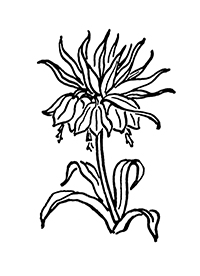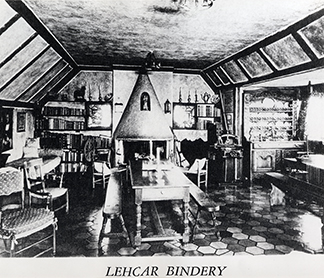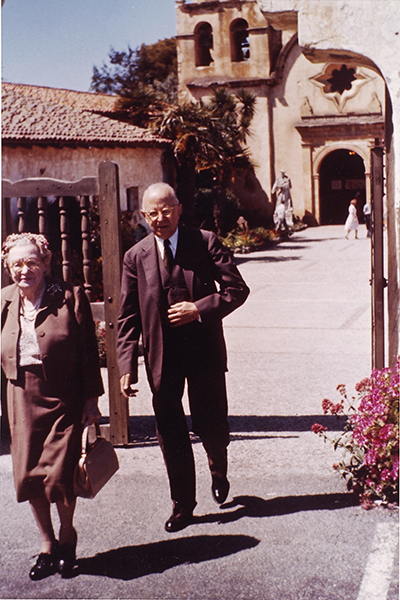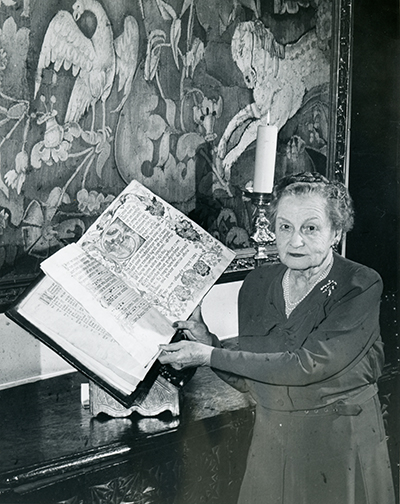History
Rachel McMasters Miller Hunt's early love of nature and books grew into a lifelong pursuit of rare or historical works about plants, gardens and botany. She became fascinated by the people associated with these books and also collected their portraits, letters, manuscripts and original artworks.
Elmhurst, the home and gardens of Rachel and Roy Arthur Hunt on Ellsworth Avenue in Shadyside in Pittsburgh's East End, housed her collection of rare books, artwork, antique furniture, tapestries and sculpture and reflected her love of plants and their history. Throughout her life Rachel welcomed visits from scholars, hosted garden clubs and entertained publishers, book collectors and authors at Elmhurst and also shared her collection through talks and gallery and museum exhibitions. By the 1950s Rachel Hunt's collection was widely known for its excellence and was sought by some of the country's leading universities and botanical centers. Under the editorial stewardship of her personal librarian, Jane Quinby, and with essays from leading authorities on the collection and the historical background of its items, work commenced on the Catalogue of Botanical Books in the Collection of Rachel McMasters Miller Hunt (Hunt Catalogue; 1958–1961). Wanting the collection to remain in Pittsburgh, the Hunts decided to donate it and a building to Carnegie Institute of Technology (now Carnegie Mellon University) to house both her collection and a campus library.
Dedicated in 1961, the Rachel McMasters Miller Hunt Botanical Library was envisioned as a research center focusing on the history of botany and the history of botanical publication and as a repository where her collections would be preserved, curated, augmented and made accessible to researchers. By 1971 the organization had so diversified that it was renamed Hunt Institute for Botanical Documentation with four programmatic departments of Archives, Art, Bibliography and the Library. Since 1961, Rachel Hunt's original collection has been substantially augmented in all four departments. In accordance with the Hunts' original vision of a living collection with public availability, the Institute maintains a regular exhibition and publication program and accessibility for research on a variety of scientific and cultural subjects related to the plant sciences.







